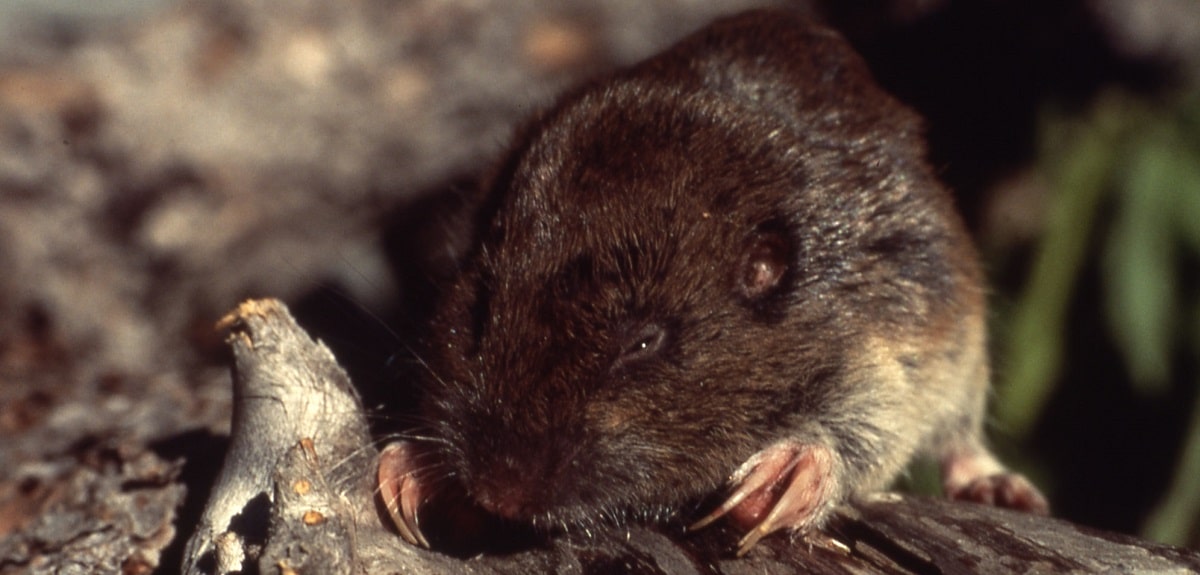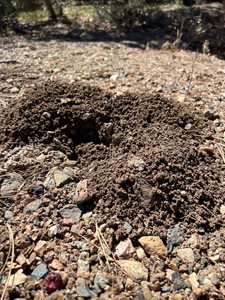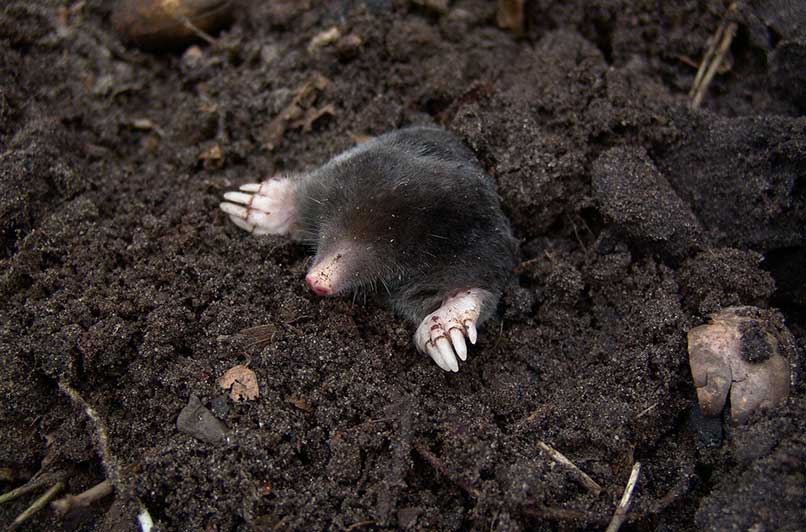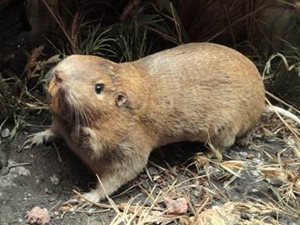
Homeowners frequently report hills, holes, tunnels, and mounds popping up in their yard. If this is occurring in your lawn, you are likely wondering what creature could be responsible. Two wild animals are the most likely culprits when it comes to digging up a perfectly maintained lawn or garden: Moles and Gophers.
It’s important to identify these species properly, as moles are controlled differently compared to a gopher.
Watch This Gopher in the Grass
Watch This Mole Dig in the Dirt
Because both of these animals spend most of their time underground, it can be difficult to see one. Fortunately, the signs, activity, and behaviors of these two species tell them apart. To help you identify the critter destroying your outdoor space, this guide highlights the differences and key signs left behind by moles vs gophers.
Any doubts? Call a Critter Control wildlife technician to help you get to the bottom of the situation and tailor solutions to remove the critter and bring your yard back to tip-top shape.
The Appearance of Moles vs Gophers
Mounds and Holes
Both animals dig extensive burrow systems. Each animal creates mounds of dirt at the entrance to the network of tunnels. You can identify a gopher infestation from a mole one by the piles of dirt they create.
Mole Mounds

Molehills appear volcano-shaped in profile, with a hard-to-spot hole situated in the middle.
These mole mounds are typically 2 inches in diameter, much smaller than gophers.
Gopher Mounds

Gopher mounds are often described as crescent-shaped, fan-shaped, or horseshoe-shaped. The hole is usually plugged, and off to one side of the mound. The diameter of the mound is typically between 10 to 20 inches in diameter.
These mounds and holes are most commonly found in the spring and fall, a time when gophers are most active. Gophers may create several unsightly dirt mounds in yards in a single day. They frequently build their hills in gardens and landscaping, as these places offer a source of food and water. Lastly, Gopher tunnel entrances often have small piles of loose soil covering the opening.
Behavior of Moles vs Gophers
Runaways
Moles and Gophers have a few behaviors that distinguish the species. The most obvious difference is the runaways produced by moles. Runways are long mole tunnels just below the lawn surface, which elevate the ground, forming small raised ridges. These ridges are best described as “spongy and soft” when stepped on, and reform if the mole is active.
In contrast, Gophers do not typically leave runaways, as their tunnel system is deeper underground.
Diet
Gophers are omnivorous, feeding on vegetation such as subterranean roots, seeds, nuts, berries, roots, tubers, grains, grass, and insects. On the other hand, moles generally avoid plant material, classified as mostly carnivorous with their diet reliant on earthworms and grubs.
Damage of Gophers vs Moles
Both burrow systems can create extensive damage in your yard.
Mole tunnels tend to cover more area underground than gopher tunnels. Gophers can produce up to 200 mounds in a year, using their claws and forefeet to construct their burrows, manipulating soil with their powerful legs and broad chests.
Gophers generate more damage above ground. In many cases, gophers will even uproot flower beds and vegetable gardens.
Both gophers and moles will continue to damage yards if allowed to remain. Underground utility cables and irrigation pipes are often damaged due to pocket gopher gnawing, and the pests break up bark when pruning and chewing on the bottoms of trees. Gopher damage to root systems often goes unnoticed until the aboveground plants begin to wilt and wither away. Importantly, Gophers may attack other animals, including cats and humans, and can inflict serious bites with their long, sharp teeth.
Moles typically go unnoticed until runways or mounds are spotted in the yard. Over time, moles disturb grass and plant roots, stunting vegetative growth.
Gopher & Mole Control
Attempting to control either species can be time-consuming and expensive. You must identify the main tunnel, use proper bait for the traps, and check them often! It is not feasible to exclude these animals from an entire yard, but we can protect gardens and landscaping.
Homeowners who encounter either a mole or a gopher infestation are encouraged to contact wildlife removal professionals. The technicians at Critter Control have the skills and tools necessary to keep gophers and moles from causing further destruction in yards professionally and humanely.

